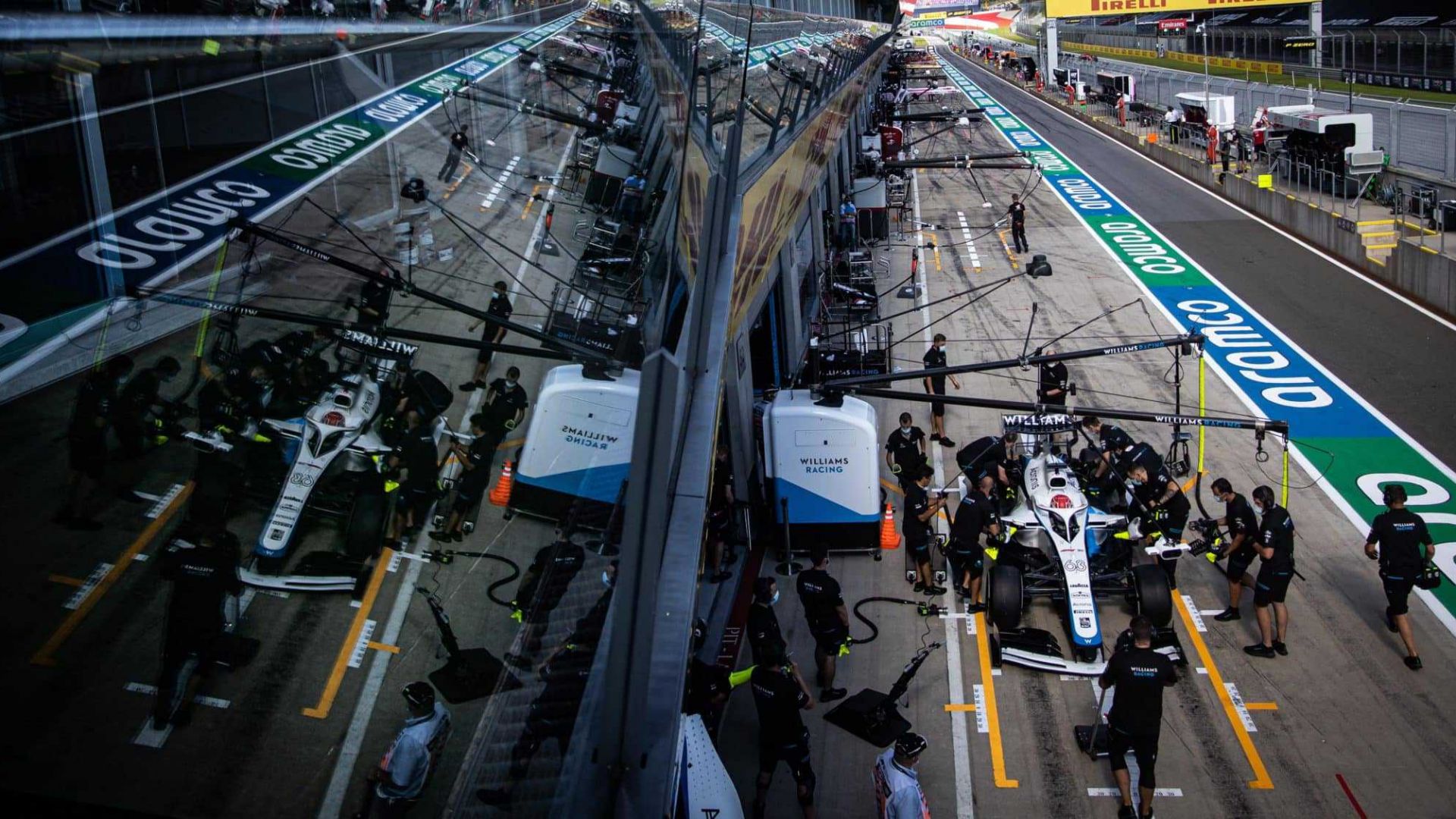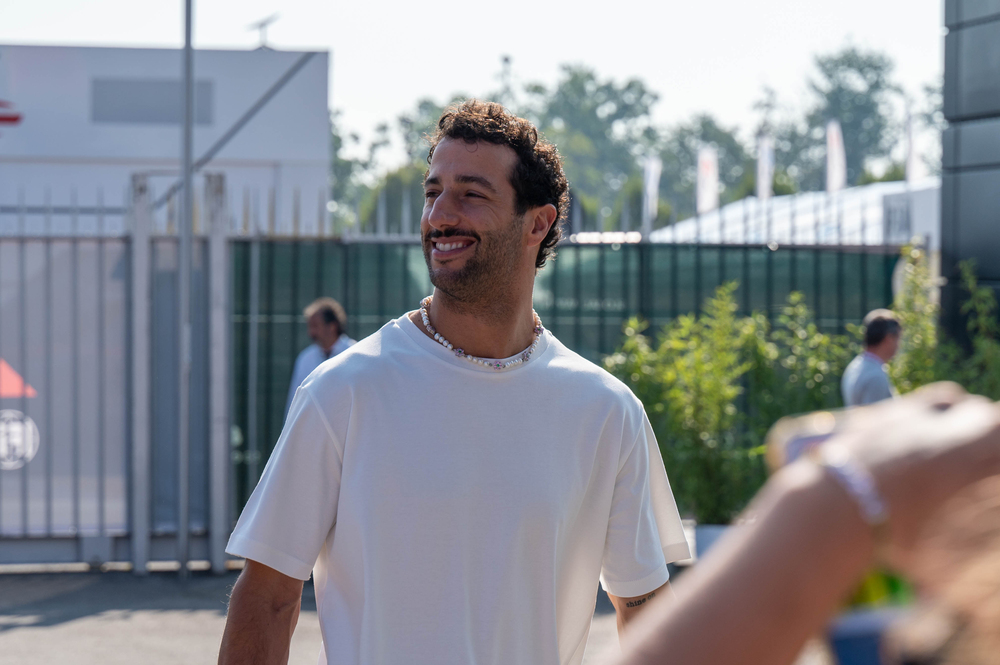How Does Scrutineering In F1 Work?


Formula 1 is a sport that takes a hard stance against cheating, so just how does scrutineering in F1 work? The FIA’s number one tool to combat rule-breaking is the scrutineering rig, which helps inspectors determine whether a car is legal before it goes onto the track.
Because the Formula 1 regulations and dimensions are so specific and complex, the scrutineering rig is designed to be the ultimate multi-tool. The rig also ensures that cars are conforming to performance and safety protocols.
Key Takeaways
- Pre-Event, Live, and Post-Event Checks: Scrutineering in F1 is a rigorous inspection process that occurs at different stages of a race event. These include Pre-event Scrutineering to ensure cars comply with safety and design regulations before the race, Live Race Event Scrutineering for checks during the race, and Post-event Scrutineering to verify the final condition of the cars and ensure compliance throughout the race.
- Technical Compliance: The scrutineering process involves a detailed inspection of the cars to ensure they meet all technical regulations. This includes comparing the physical components of the car with the CAD files supplied by the teams, as well as checking for the correct functioning of various systems and components to maintain the integrity of the competition.
- Weighing the Cars: One of the crucial aspects of scrutineering is weighing the cars to ensure they meet the minimum weight requirements set by the FIA. The scrutineering rig is equipped with specialized weighing platforms to accurately measure the car’s weight, which is a vital factor in race legality and performance.
How Does Scrutineering In F1 Work?
The original, American-made $400,000 scrutineering rig was introduced in 1995 and has changed little between then and now. It consists of an aluminium flatbed 4.8 meters long and 2.3 meters wide that can be split in half for grand prix transportation needs. The first duty the rig must accomplish when it reaches the pit garage is to ensure that the vehicle is level. This task is performed using adjustable feet and a sophisticated laser-based level.
One of the key abilities the F1 scrutineering rig possesses is the ability to weigh cars. Four French-made weighing platforms seated on strain-gauged cantilever load cells are used to determine weight as accurately as possible, and the technology is so cutting-edge that it has built-in temperature compensation.
On top of that, the scales are re-calibrated at each grand prix to adjust them to local gravity references. This is because, instead of measuring mass, the rig measures the force that gravity exerts on the mass. Even the most minute gravitational differences, which are often based on elevation and location, can affect the readings’ accuracy. Weight variations as high as 1500 grams are possible between Silverstone in England and Interlagos in Brazil, for example.
Another consideration that F1 teams have to consider is part fittings and how they affect the overall weight. It is just as crucial to avoid being underweight as it is overly weighted. To weigh the vehicle, pit crewmen push it up a ramp onto the scrutineering rig so that each wheel sits on each of the cantilevered platform scales.
Regulations that vehicles must adhere to for allowable practice times and grand prix participation include:
- Dimensions and rigidity of aerodynamic devices
- Engine capacity and control systems
- Fuel specs and refuelling systems
- Tyre weight
- Overall weight
The next regulation check that crews perform after weighing finishes determines whether parts are too high or low on the vehicle. A long hydraulic plate is fixed into place using half a dozen regulation holes under the monocoque and a corresponding number of aluminum bosses. The surface plate should be 14 mm below the reference plane, a standard measure used to contextualize all vehicle height data.
Team members also measure using metal templates, which align with grid markings on the rig’s plate, to determine overall dimensions and ensure that they align with Formula 1 regulations at these predetermined points.
The Formula 1 Inspection Process
Cars can undergo inspection at any time an FIA Technical Delegate and his scrutineering team deem necessary. Car selection is done at random, by computer, throughout the course of the meeting to ensure fairness in vehicle inspection. A standard car that follows regulations can be inspected in as little as a couple of minutes. Any found regulation breaches can take more time, depending on the violation.
A standard grand prix checklist for scrutineers covers a whopping 60 inspection points to check on each participating car. These measures can range from disc brake thickness to determining whether the car is able to be put into neutral by the marshal. Not all of these checks require the car to sit in a scrutineering bay, however. Tyre barcode inspection, for example, can be done quite easily by individual scrutineers in team garages without a formal inspection.
A typical vehicle inspection for the scrutineering team when taking a car to their bay can include:
- Overall height, weight, and width of the stock car in question
- Assessing rear wing overhang, configuration, and height, as well as the width of the front and rear wings
- Checking on the underside shape and rear bodywork area
- The height and width of the car’s diffuser
- Making sure that bodywork around the front wheels conforms properly
With all this in mind, it seems like the scrutineering rig is an all-in-one tool, but that is not the case. The rig cannot perform fuel analysis, for example, which requires devices that can perform gas chromatography and mass spectrometry. It also cannot check computer software to ensure that it meets FIA regulations. These checks are performed by specialists in the field at each grand prix while the scrutineering team handles the rest of the necessary inspection points.
Scrutineering: A Useful Tool and Effective Deterrent
Car inspections are also performed after a race has concluded. F1 vehicles pull into the parc fermé and await inspection at the scrutineering garage to check the parts’ height and weight again. However, another more frequent use of the scrutineering rig is to weigh drivers while still wearing their helmets. This ensures that, coupled with their vehicle weight and onboard cameras, that the entire rig does not exceed 740 kilograms in weight with the driver in it.
While these are the inspections that most drivers will encounter during their practice sessions and grand prix races, the scrutineering team has a lot of work to do outside of vehicle and driver inspections. Formula 1 regulations are such that it takes extensive checking of vehicle dimensions, even while drivers have returned to the podium to celebrate a hard-earned victory or the pitlane at the end of a race to commune with their teammates. The scrutineering crew must work hard to ensure fairness and accuracy at each race to prevent safety violations that mat shave a fraction of a second off of lap times from harming drivers on the track.
The scrutineering rig is a sophisticated and multifunctional means to this end that is efficient and effective as an arbiter of fairness in F1. While the FIA encourages designers and engineers to exercise creativity and ingenuity, the rules must be upheld to guarantee driver safety and ensure that vehicles can function properly.





